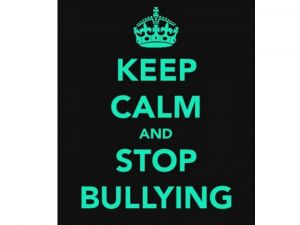Statistics show that 3.2 million children are victims of bullying each year. There are laws, policies, and advocacy groups working towards bullying awareness and punishing those who bully others, but the problem is not getting any better. 90% of 4th through 8th graders report being the victim of bullying, and 1 in 10 students will drop out of school due to repeated bullying.
Bullying is a serious issue across the United States, but what are we doing to help solve it?
Why Should We Care? Long Term Effects of Bullying and Being Bullied
Studies show that if bullying behavior in children is not handled correctly, those  children can grow up to develop anger issues, often end up as the aggressor in domestic violence issues, and may even have trouble holding a job or maintaining personal relationships. As parents, children who were bullies often berate and put down their children, argue with other parents, and worst of all, set a poor example for their child. This starts a bullying cycle that will only get worse as time goes on.
children can grow up to develop anger issues, often end up as the aggressor in domestic violence issues, and may even have trouble holding a job or maintaining personal relationships. As parents, children who were bullies often berate and put down their children, argue with other parents, and worst of all, set a poor example for their child. This starts a bullying cycle that will only get worse as time goes on.
Bullying has been shown to lead to increased instances of missing school or dropping out completely, self-confidence and self-esteem issues, depression, and if it goes on for long enough, can lead to self-harming and suicide. This is especially true if the one being bullied is already in a minority group and may not have people to talk to about their issues. Bullying can lead to serious emotional and mental issues later in life, and children who are bullied can also grow up to become a bully themselves, transferring their anger and frustration from their treatment onto others. “When individuals must deal with deep emotional upset without any support or system of coping skills the outcome can be dire.”
What is being done at the state and federal level?
Did you know that there is currently NO federal law that specifically applies to bullying? Federally funded schools are only obligated to resolve bullying when it is deemed to overlap with harassment based on a person’s race, national origin, color, sex, age, disability, or religion.
States are responsible for implementing laws and policies at their level, though the laws and policies often include different things. 41 states have both laws and policies governing bullying, while the remaining 10 states have laws only. Some states specify which groups or characteristics someone may be bullied based on, while others do not. In Illinois specifically, there are laws governing bullying, but no policies. Illinois has five laws that cover bullying which also include cyber bullying.
To look up specific bullying laws and policies for each state, visit this site: http://www.stopbullying.gov/laws/index.html.
Call to Action: What can WE do?
Organizations such as dosomething.org, The Bully Project, and stopbullying.gov are incredibly active in attempting to spread awareness of and stop bullying, but they can only do so much. Putting a stop to bullying requires support and education where it happens most: school.
Dosomething.org offers a “Bullying Policy Makeover” program where schools can sign up to host an event to review their current anti-bullying policy, discuss bullying problems specific to their school, and finally, create a new policy that is relevant to their school system and will be more effective than the current policy in reducing bullying. This program is open to all students and gets them involved in speaking up about what bullying related issues they think are most important to them and aim to help implement a more effective and current policy to tackle these issues. If all school social workers took advantage of this opportunity, they could make a huge impact at their school and hopefully, greatly reduce the amount of bullying in their school.
On top of reviewing and modifying school bullying policies, educators and administrators need to be trained on how to respond to bullying, and to be familiar with the school’s bullying policy so that they can adequately protect the students that are being victimized and help to rehabilitate those who choose to target others. According to dosomething.org, 1 in 4 teachers see nothing wrong with bullying and will only intervene 4% of the time. Additionally, over 67% of students believe that schools respond poorly to bullying, with a high percentage of students believing that adult help is infrequent and ineffective.
Conclusion
Bullying is a nationwide problem that affects everyone at some point in their life. Whether you have been bullied, known someone who was bullied, or maybe bullied someone yourself, everyone has been affected by bullying in some way. Millions of children are affected by bullying every year, and the statistics surrounding bullying do not seem to be getting any better. As social workers, we can make a huge impact by getting involved in our schools and communities, spreading awareness, and facilitating education for educators and administrators.
Together, we can stop bullying.
http://www.stopbullying.gov/index.html
http://www.thebullyproject.com/